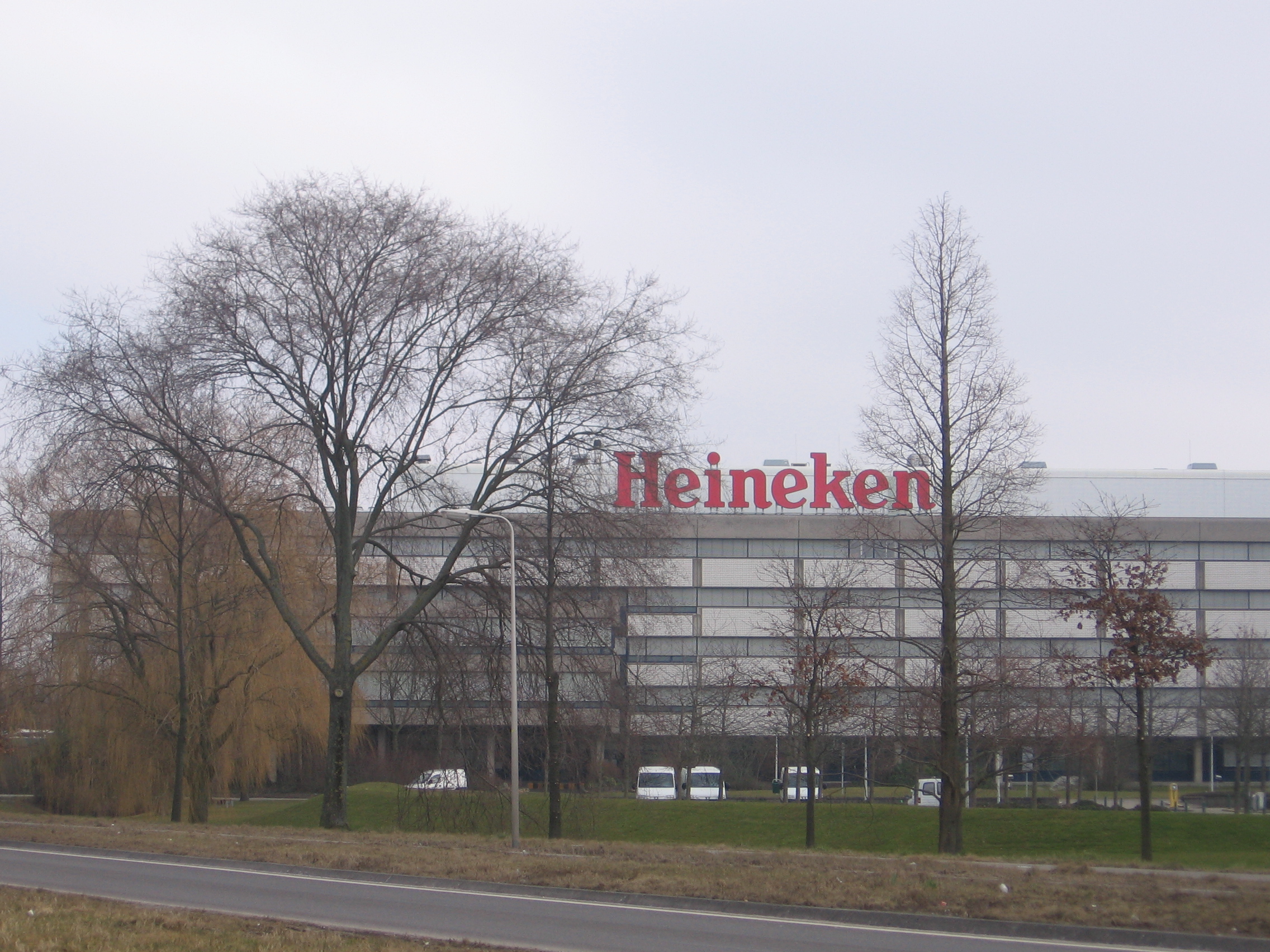|
Brasserie De Saint-Omer
Brasserie de Saint-Omer is a French brewery in Saint-Omer, in the Pas-de-Calais department, situated in the Nord-Pas-de-Calais region. It is one of the two big breweries left in the Nord-Pas-de-Calais. Presentation The Brasserie de Saint-Omer produces about 2 million hectolitres of beer a year, so it is the first independent brewery in France. Each year, it produces about 700 million bottles, 90 million cans and 25,000 casks. It brews about thirty beers for about 200 references and employs 160 people. It exports 40% of the production. History The brewery was founded in . In 1950, after several repurchases and fusions, it was named "Brasserie Artésienne". Its production was then 45,000 hectolitres a year. Until 1985, the brewery was mainly focused on the regional market. That year, it was bought by the Saint-Arnould group and adopted the name Brasserie de Saint-Omer. The Facon breweries, in Pont-de-Briques and in Semeuse, Lille, merged with Saint-Omer in 1995. The new company re ... [...More Info...] [...Related Items...] OR: [Wikipedia] [Google] [Baidu] |
Brasserie Saint-Omer 03
In France, Flanders, and the Francophone world, a brasserie () is a type of French restaurant with a relaxed setting, which serves dishes and other meals. The word ''brasserie'' is French for "brewery" and, by extension, "the brewing business". Although most brasseries still serve a large selection of beers, most of them offer a wider choice of beverages such as wines and liquors. A brasserie can be expected to have professional service, printed menus, and, traditionally, white linen—unlike a bistro which may have none of these. Typically, a brasserie is open every day and serves the same menu, generally composed of a few traditional French dishes, all day. A classic example of a brasserie dish is steak frites. Etymology The term ''brasserie'' is French for "brewery", from Middle French ''brasser'' "to brew", from Old French ''bracier'', from -4; we might wonder whether there's a point at which it's appropriate to talk of the beginnings of French, that is, when it wa ... ' ... [...More Info...] [...Related Items...] OR: [Wikipedia] [Google] [Baidu] |
Saint-Omer
Saint-Omer (; ; Picard: ''Saint-Onmé'') is a commune and sub-prefecture of the Pas-de-Calais department in France. It is west-northwest of Lille on the railway to Calais, and is located in the Artois province. The town is named after Saint Audomar, who brought Christianity to the area. The canalised section of the river Aa begins at Saint-Omer, reaching the North Sea at Gravelines in northern France. Below its walls, the Aa connects with the Neufossé Canal, which ends at the river Lys. History Saint-Omer first appeared in the writings during the 7th century under the name of Sithiu (Sithieu or Sitdiu), around the Saint-Bertin abbey founded on the initiative of Audomar, (Odemaars or Omer). Omer, bishop of Thérouanne, in the 7th century established the Abbey of Saint Bertin, from which that of Notre-Dame was an offshoot. Rivalry and dissension, which lasted till the French Revolution, soon sprang up between the two monasteries, becoming especially virulent when ... [...More Info...] [...Related Items...] OR: [Wikipedia] [Google] [Baidu] |
Pas-de-Calais
The Pas-de-Calais (, ' strait of Calais'; ; ) is a department in northern France named after the French designation of the Strait of Dover, which it borders. It has the most communes of all the departments of France, with 890, and is the 8th most populous. It had a population of 1,465,278 in 2019.Populations légales 2019: 62 Pas-de-Calais INSEE The Calais Passage connects to the Port of Calais on the . The Pas-de-Calais borders the departments of [...More Info...] [...Related Items...] OR: [Wikipedia] [Google] [Baidu] |
Nord-Pas-de-Calais
Nord-Pas-de-Calais (; ; West Flemish: ''Nôord-Nauw van Kales'') was a former regions of France, administrative region of France. Since 1 January 2016, it has been part of the new Regions of France, region Hauts-de-France. It consisted of the departments of France, departments of Nord (French department), Nord and Pas-de-Calais. Nord-Pas-de-Calais bordered the English Channel (west), the North Sea (northwest), Belgium (north and east), and Picardy (south). Until the 17th century, the history of the North was largely shared with the history of Belgium (the Celtic Belgae, Belgians during Antiquity were a multitude of Celts, Celtic peoples from the north of Gallia Belgica, Gaul), that of a land that "for almost a thousand years served as a battlefield for all of Europe." The majority of the region was once part of the historical Southern Netherlands, but gradually became part of France between 1477 and 1678, particularly during the reign of King Louis XIV. The historical Province ... [...More Info...] [...Related Items...] OR: [Wikipedia] [Google] [Baidu] |
Lille
Lille (, ; ; ; ; ) is a city in the northern part of France, within French Flanders. Positioned along the Deûle river, near France's border with Belgium, it is the capital of the Hauts-de-France Regions of France, region, the Prefectures in France, prefecture of the Nord (French department), Nord Departments of France, department, and the main city of the Métropole Européenne de Lille, European Metropolis of Lille. The city of Lille proper had a population of 236,234 in 2020 within its small municipal territory of , but together with its French suburbs and exurbs the Lille metropolitan area (French part only), which extends over , had a population of 1,515,061 that same year (January 2020 census), the fourth most populated in France after Paris, Lyon, and Marseille. The city of Lille and 94 suburban French municipalities have formed since 2015 the Métropole Européenne de Lille, European Metropolis of Lille, an Indirect election, indirectly elected Métropole, metropolitan ... [...More Info...] [...Related Items...] OR: [Wikipedia] [Google] [Baidu] |
Heineken International
Heineken Naamloze vennootschap, N.V. (), branded as The Heineken Company is a Dutch multinational corporation, multinational brewery, brewing company, founded in 1864 by Gerard Adriaan Heineken in Amsterdam. Heineken owns over 165 breweries in more than 70 countries. It produces 348 international, regional, local and speciality Beer, beers and Cider, ciders and employs approximately 85,000 people. With an annual beer production of 24.14 billion litres in 2019, and global revenues of 23.894 billion euro in 2019, Heineken N.V. is the number one brewer in Europe and one of the largest brewers by volume in the world. Heineken's Dutch breweries are located in Zoeterwoude, 's-Hertogenbosch and Wijlre. The original brewery in Amsterdam, closed in 1988, is preserved as a museum called Heineken Experience. Since the merger between the two largest brewing empires in the world, Anheuser-Busch InBev and SABMiller, in October 2016, Heineken has been the second-largest brewer in the world. Hi ... [...More Info...] [...Related Items...] OR: [Wikipedia] [Google] [Baidu] |
1330030990 B975261838Z
133 may refer to: *133 (number) *AD 133 *133 BC *133 (song) *133 (New Jersey bus) *133 Cyrene 133 Cyrene is a fairly large and very bright main-belt asteroid that was discovered by J. C. Watson on 16 August 1873 in Ann Arbor, Michigan, and named after Cyrene, a nymph, daughter of king Hypseus and beloved of Apollo in Greek mythology. ..., a main-belt asteroid * SEAT 133, also known as the Fiat 133 and Nasr 133, a city car {{numberdis ... [...More Info...] [...Related Items...] OR: [Wikipedia] [Google] [Baidu] |
Breweries Of France
A brewery or brewing company is a business that makes and sells beer. The place at which beer is commercially made is either called a brewery or a beerhouse, where distinct sets of brewing equipment are called plant. The commercial brewing of beer has taken place since at least 2500 BC; in ancient Mesopotamia, brewers derived social sanction and divine protection from the goddess Ninkasi. Brewing was initially a Cottage Industry, cottage industry, with production taking place at home; by the ninth century, monasteries and farms would produce beer on a larger scale, selling the excess; and by the eleventh and twelfth centuries larger, dedicated breweries with eight to ten workers were being built. The diversity of size in breweries is matched by the diversity of processes, degrees of automation, and kinds of beer produced in breweries. A brewery is typically divided into distinct sections, with each section reserved for one part of the brewing process. History Beer may have ... [...More Info...] [...Related Items...] OR: [Wikipedia] [Google] [Baidu] |






